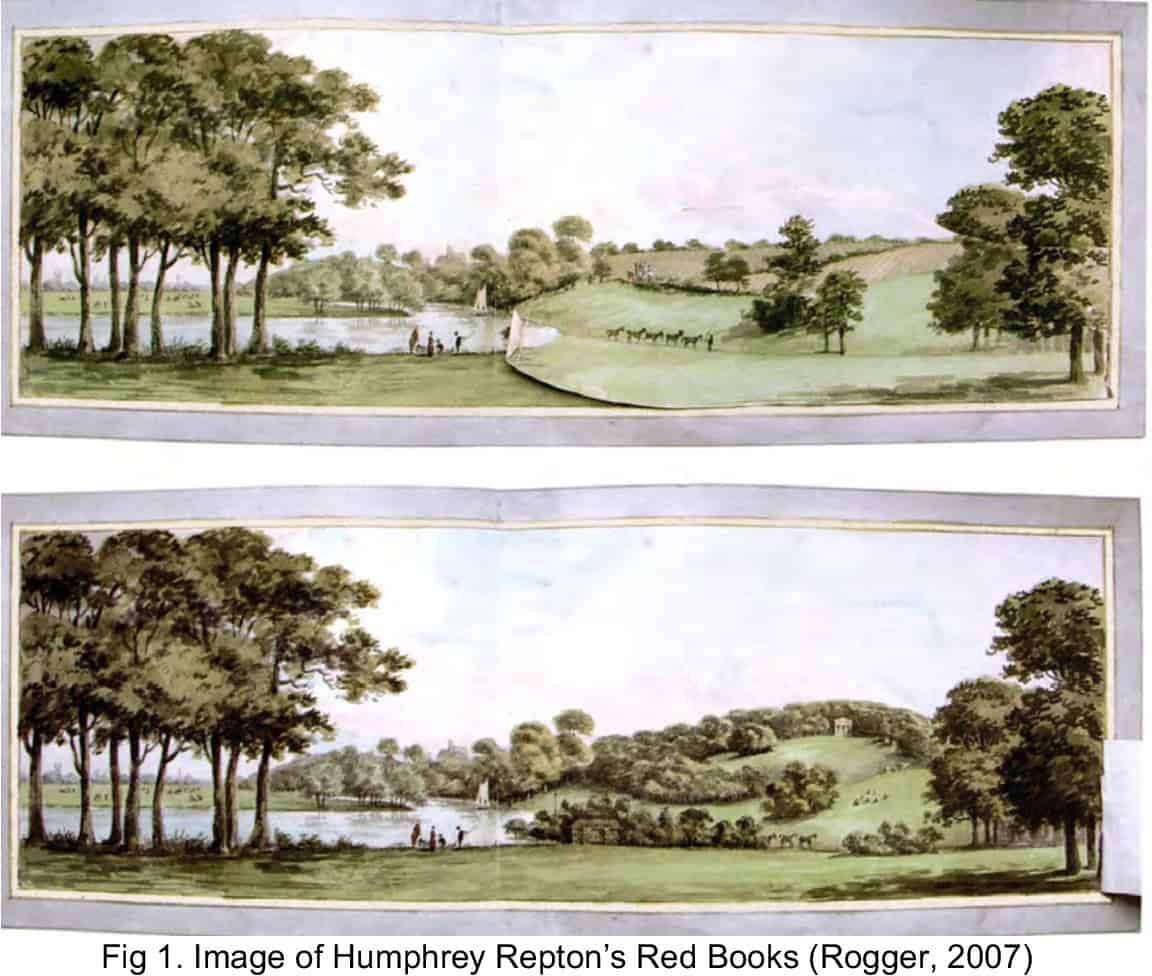
I love sharing before and after garden shots. They are so effective at capturing the sum total of a whole lot of work and, subsequently, are great inspirations. I never really considered whether or not the whole concept and tool was being used before photography. If I thought about it, I would have guessed not. However, British landscape designer Humphry Repton used the concept with his clients back in the late 1700s. Is it possible he was the first designer to use the before and after graphic device? I have no idea, but I am absolutely fascinated to pour over the drawings he created as part of his client presentations.
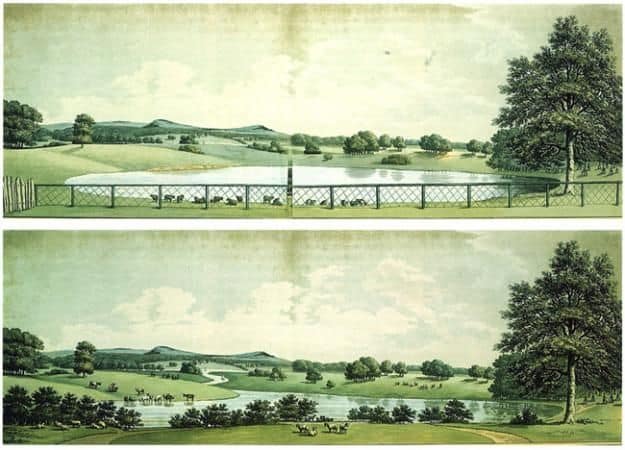
Repton, often called the successor to Capability Brown, was a British landscape designer who brought a unique blend of artistry, practicality, and marketing savvy to his craft. His Red Books weren’t just sketches on scraps of paper; they were carefully crafted, hand-bound presentations he created for clients to showcase his vision for their estates.
What Are the Repton Red Books?
The Red Books were essentially Repton’s pitch decks—detailed, personalized guides he presented to potential clients to sell them on his landscape designs. Named for their signature red morocco leather bindings, each book included watercolor illustrations, maps, and written explanations of Repton’s ideas. They were beautiful, functional, and totally ahead of their time.
The “Before and After” Magic
The standout feature of the Red Books was Repton’s clever use of overlays—flaps or sliding panels that revealed “before and after” views of the proposed changes. Imagine holding a book where you see a drab, overgrown lawn, then lift a flap to reveal a serene, artfully composed garden complete with sweeping vistas and elegant water features. It was an immersive, almost cinematic experience, designed to make clients fall in love with his vision.
Repton’s Red Books weren’t just pretty pictures—they were holistic design documents. Each book typically featured:
- Introduction: Repton’s insights into the property’s current state and its potential.
- Illustrations: Hand-painted views of the landscape, often with those famous before-and-after overlays.
- Text: Detailed explanations of his design philosophy and practical advice on implementing the changes.
- Plans: Maps and layouts showing how to execute his ideas, from planting schemes to architectural features.
The Red Books set a new standard for landscape design presentation. Repton wasn’t just selling ideas; he was selling aspiration. By visualizing how a landscape could transform, he helped clients imagine themselves in a more refined, harmonious version of their world. His work bridged the gap between the naturalistic, flowing designs of Capability Brown and the more structured, picturesque style that became popular in the 19th century.
The Humphry Repton Red Book Legacy
While the Red Books were created for individual clients, their impact reached far beyond those estates. Today, they offer invaluable insights into Repton’s methods, the evolution of landscape design, and the cultural values of his time. Many of the books survive in archives and collections, providing inspiration to modern designers. They remind us that good design is about more than just plants and paths—it’s about telling a story, sparking imagination, and connecting people to the land in meaningful ways.
Repton’s Red Books are a testament to the power of presentation and the timeless appeal of thoughtful, creative design. Whether you’re pitching a modern garden plan or dreaming up the next big thing, there’s a lot to learn from the man who turned landscape proposals into art.
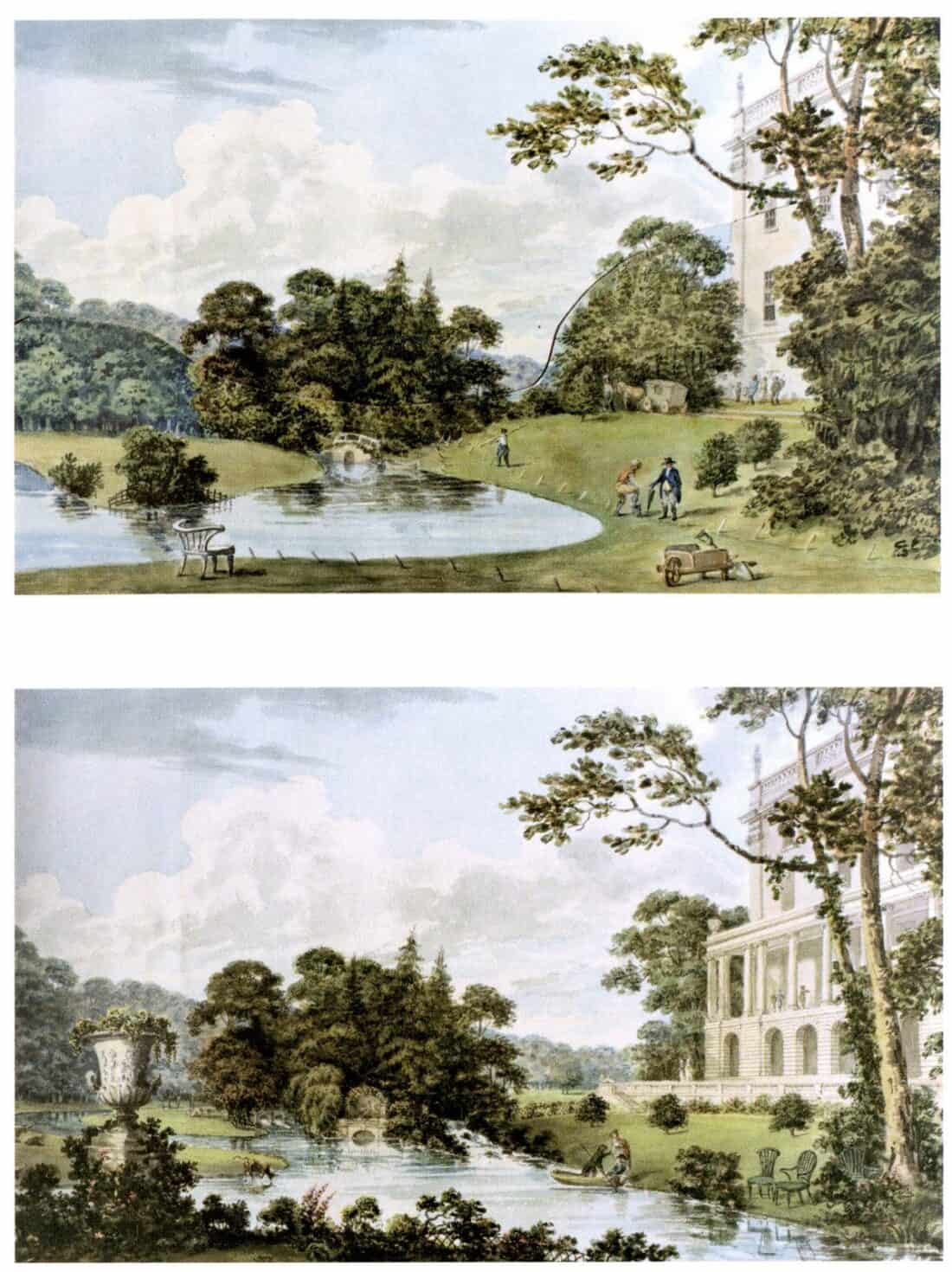

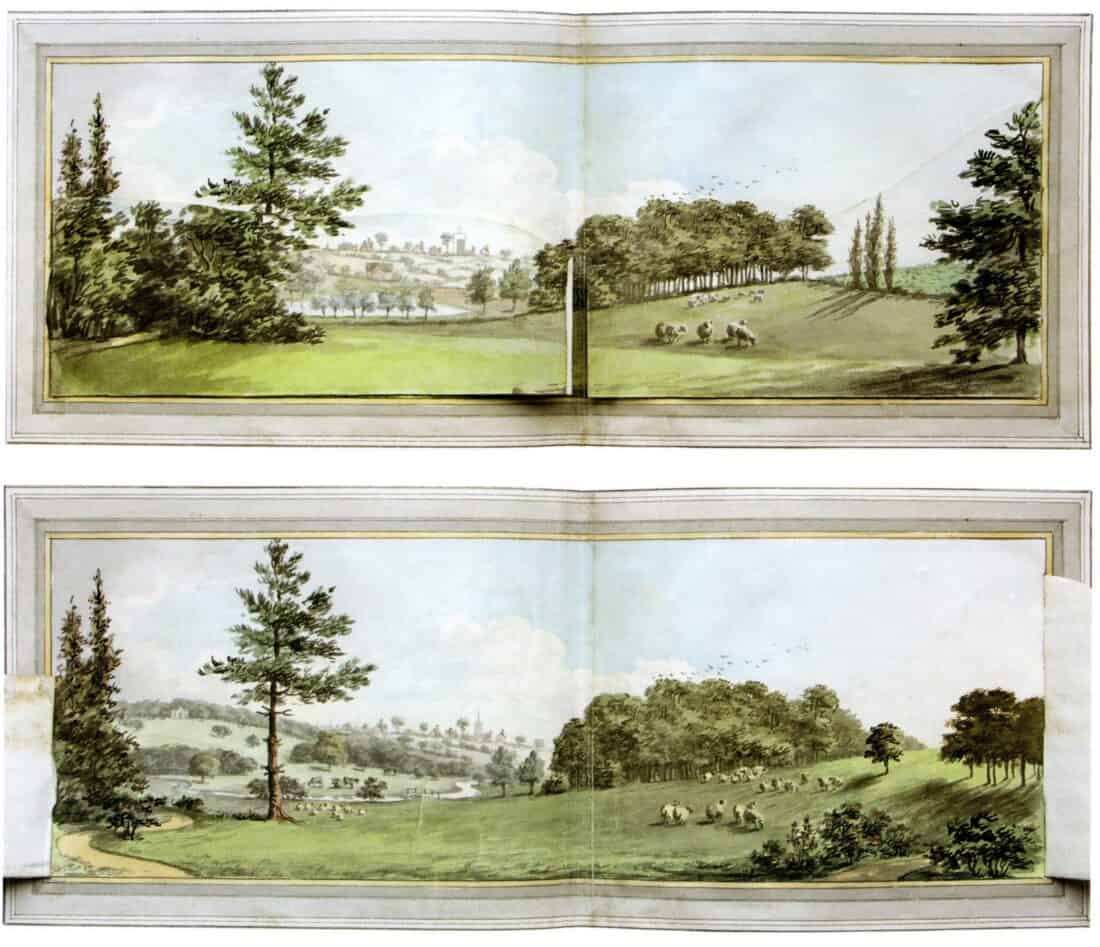
If you look closely, you can see where he cut tabs into the drawings so that the new idea or concept could be folded back right on the page. (look closely at the two images above, where you can see the outlines of the lift-off tabs). I have seen some amazing artistry come from designers when they are making idea presentations, but this is perhaps the most amazing.
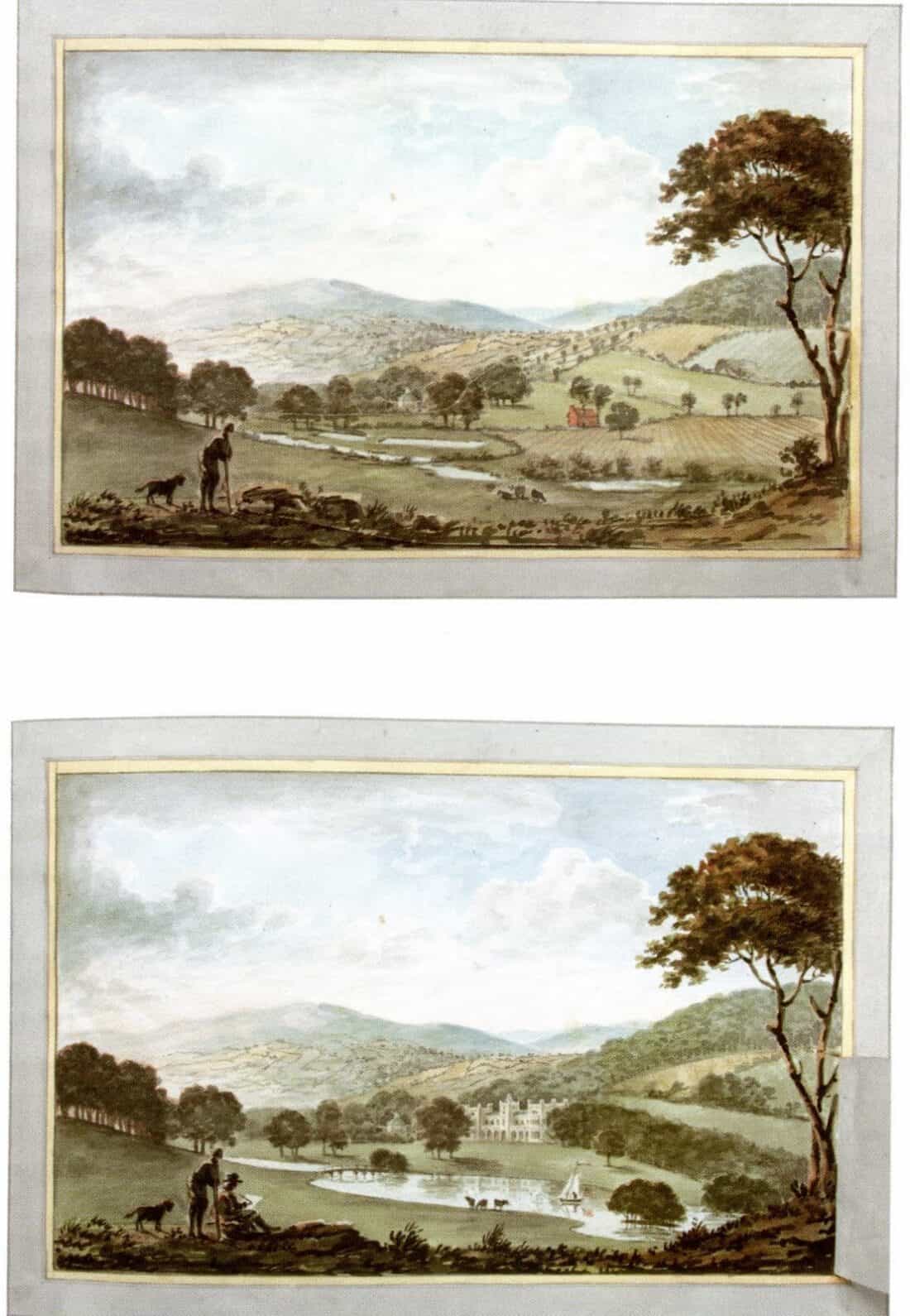
It also explains a few things. When in the English countryside, I have so many times marveled at how perfect it all seems. Rivers run in big, beautiful arcs, and the hills roll elegantly into each other with stately trees dotted around perfectly. Now I wonder if perhaps Mr. Repton had his hands all over the countryside – more than we know – or maybe all the Repton wannabes continued the job after his death.
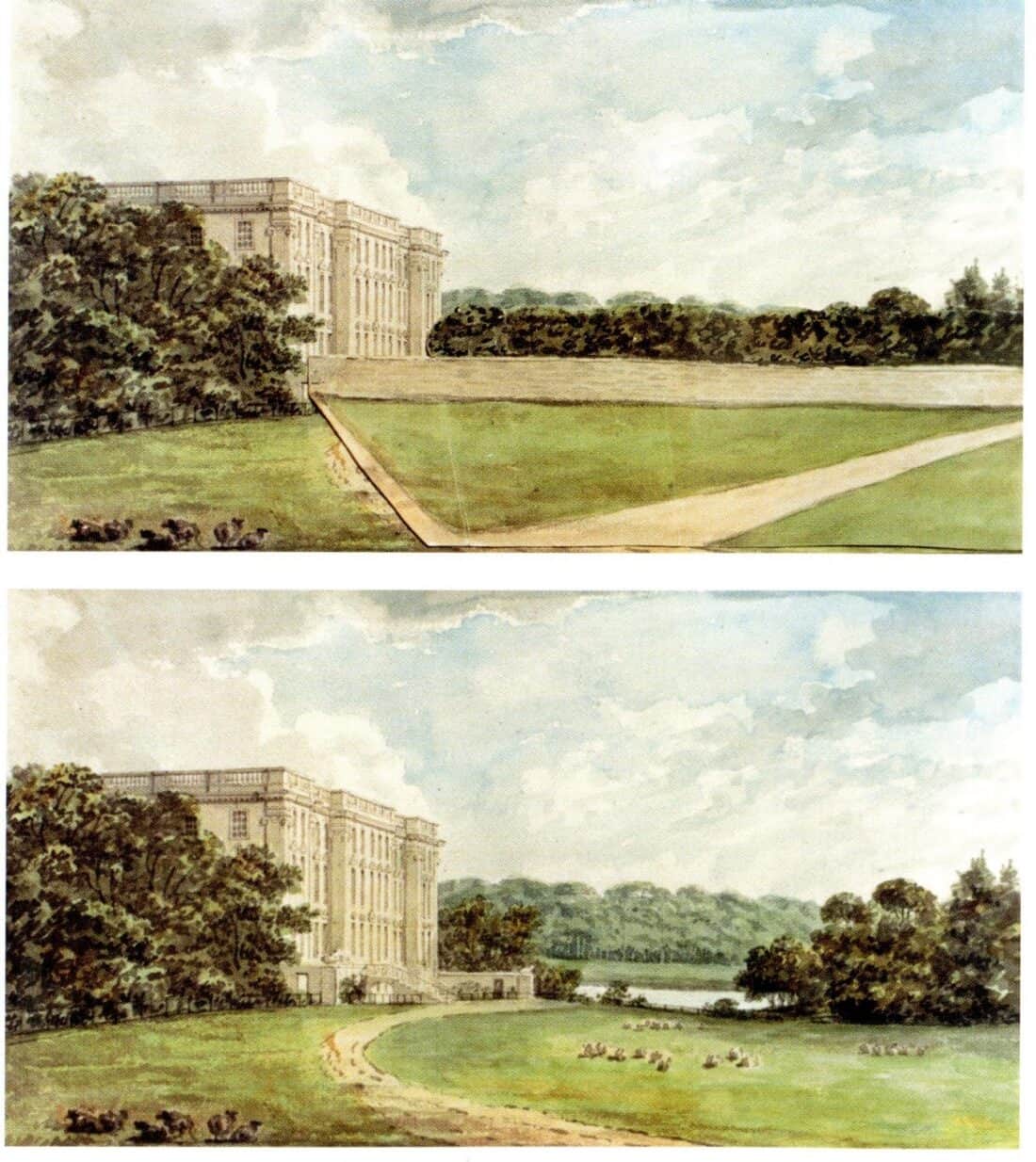
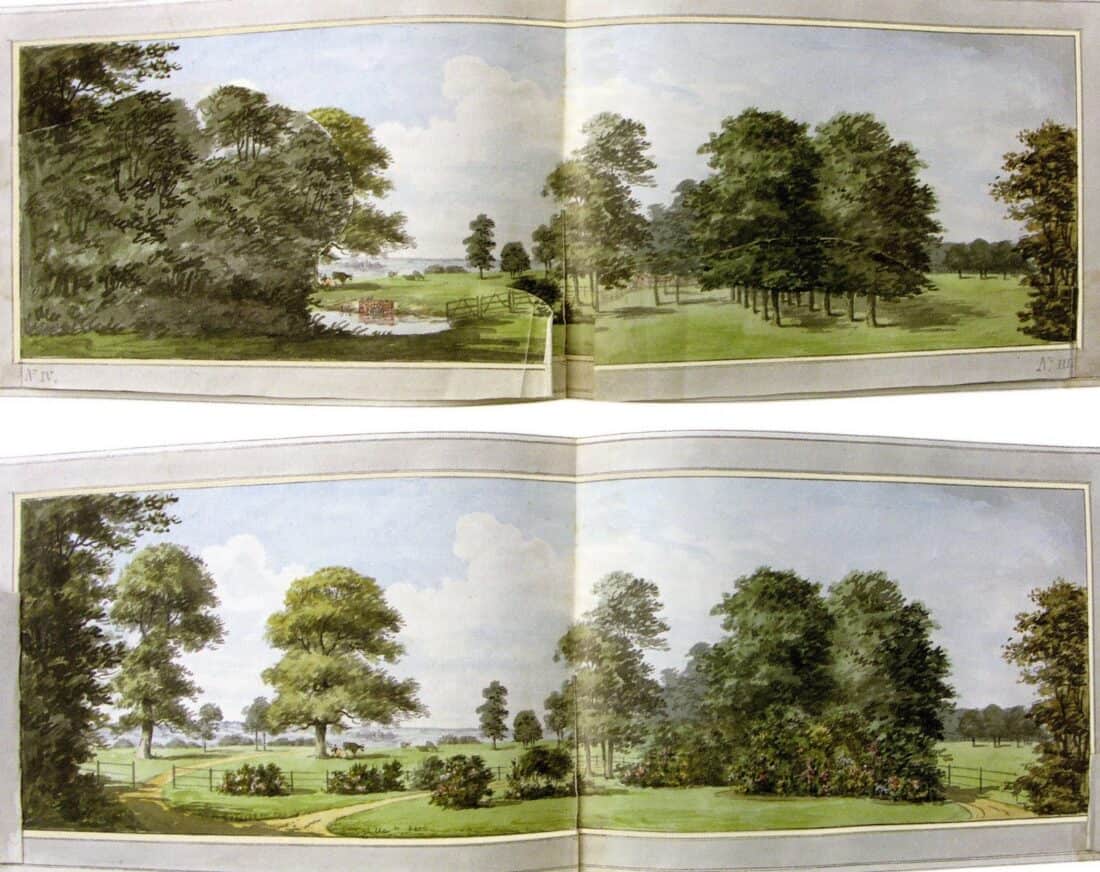
The before scenes are by no means hideous, like urban brownfield sites that are so fun to see transformed into lush gardens. But they aren’t quite as perfect as I have come to expect from England. It makes me feel better to remind myself that these gardens and views have been manipulated for centuries and that there might not be a piece of dirt in the whole country that hasn’t been altered by some decent level of skilled gardener.
If you want to check out more of the contents of Humphry’s red books, you can take a virtual tour on The Morgan Museum’s website where two complete red books are presented.
I also find Humphry Repton’s Wikipedia page quite interesting. They put a good deal of effort into contrasting Repton (who had no Horticultural skills but had lots of talent and was a great sketch artist) with his predecessor, Capability Brown. It is also interesting that Repton didn’t ever execute his designs (leaving that to the client to arrange separately), whereas Capability Brown did. Repton subsequently did not become as wealthy as Brown did. (so I guess the message is to be a contractor or a design-build house because you make more money?!? Feel free to discuss….)
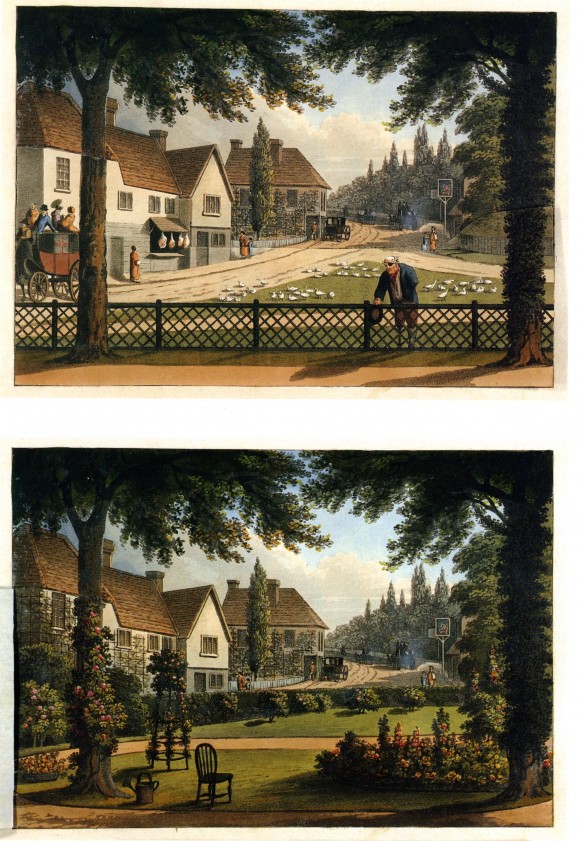
I also find it really interesting that Repton was known for borrowing. For example, he would alter the landscape so that a church steeple in the distance would be part of the pastoral scene or someone else’s trees could help frame the picturesque view.
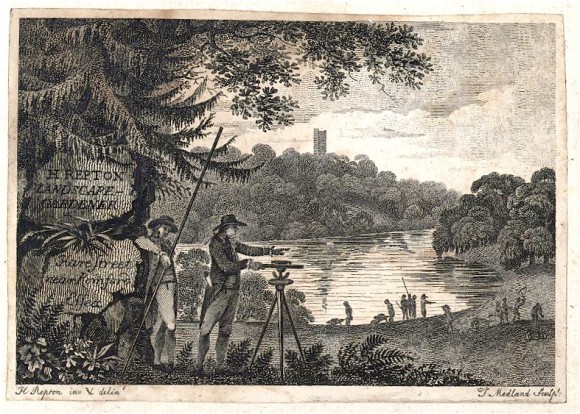
Oh– and check this out — his business card. I may need to take some inspiration from that.
images: The Morgan
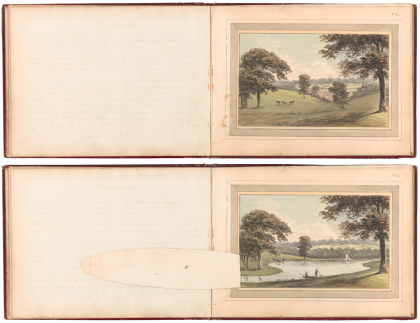
I loved looking at some of these books at the Houghton Library last time I was there! 300 years later, they are still a good idea for presenting landscape ideas.
Nice articvle! Here’s a link to one of mine on a visit to Sheringham Park, Norfolk, one of Reprton’s finest landscapes! http://wp.me/p2XHES-21T 🙂